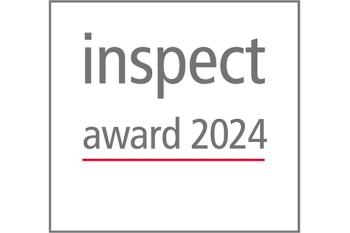Quality Control with Intelligent Image Processing on Embedded Controller
Intelligently Connected
In quality control, camera systems are mostly used as autonomous systems with their own intelligence. They are seldom integrated into the plant automation system. PC-based automation now combines image processing and automation in one solution. The consequence: Performance and flexibility increase, because several cameras can simultaneously record an object from various angles.
At the manual assembly stations of Siemens Electronics Works Amberg, Germany, camera systems take care of prod uct quality. To this end the image processing software Simon iBV runs on a Simatic S7 modular embedded controller. The controller is integrated into the automation of the assembly line and is well suited for PLC-oriented applications in the high-performance field. It consists of the EC31 CPU and the optionally available modules EM PC and EM PCI-104 for expanding with plug-in cards. This allows the most diverse automation tasks to be integrated into a total solution on a hardware basis. The peripherals can be connected in a distributed or central manner - by using the SM modules of the S7-300 series. Installation and commissioning are identically to the Simatic S7-300.
No Chance for Errors
The electronics plant produces numerous components for the Simatic family. On the ML200flex assembly line for ET200 distributed I/Os, 79 different modules in 35 different enclosure versions are produced. One special feature of this line is that each part is checked for 100% completeness and correctness. In this way, any possible assembly errors can immediately be corrected. Systematic errors do not stand a chance: The finished products leave the line guaranteed error-free.
Intelligent Image Processing
This quality control is made possible by the innovative machine vision system Simavis P of the Siemens Solution Partner Simon iBV in Bayreuth, Germany. The software runs on the Simatic S7-mEC. High-resolution cameras provide the images for this. Wide-area flash lamps ensure precisely reproducible lighting over a long period of time and rule out the interference of external light. The light from the flash is precisely aligned and is not noticeable from outside of the test area.
The parts to be inspected can be simultaneously recorded from various angles. For this purpose, several cameras can be connected to the Simatic S7-mEC. At the line at Amberg, however, one view per assembly station is sufficient - up to nine different criteria are checked at the same time: The presence of screws, sealing rings, connector plugs, etc. These criteria can then be checked for up to 16 individual characteristics. Thus, the system not only checks whether the correct components were assembled, it also checks for the exact alignment - of a coding lug - for example.
User-friendly Operator Interface
Images and test results are displayed on a Simatic flat panel monitor Pro. This has IP65 protection and is mounted on a support arm in such a way that it can be moved into the given optimal position at the assembly station.
The defect locations are clearly marked by the system. Information on clearing the defects makes it easy for the assembly personnel to quickly correct any assembly errors. Only once a renewed check of the module confirms the correctness of the results is the part conveyed to the next station. The test results are send to a higher-level database. The individual modules are identified and tracked via a Simatic RF340T RFID tag on the workpiece carrier.
The interface from Simavis P is well laid out and intuitive to operate via the touch screen. Thus, the user can change, for example, the tolerance range of a test criterion if corresponding requirements should arise.
Migration of Vision Systems
The new test stations with Simavis P on the embedded controller are gradually replacing existing systems with the Simatic vision sensor system VS710. In comparison to these systems, which had the image processing intelligence integrated in the camera system, the image processing on the Simatic S7-mEC is performed better and more flexible. So, the user program will automatically handle the control tasks for the assembly station on the same controller. The Simatic WinAC RTX software controller makes this possible in real time - and Simavis communicates with WinAC RTX via the system‘s own S7 communication system.
Successful Cooperation
Josef Bäumler, the production engineer at the Electronics Works Amberg, is satisfied with the reliability of the new system. In particular, the fact that it was possible to carry out the implementation in a short period of time convinced him that he had made the right decision - both with regard to the hardware and with regard to the cooperation with the partner Simon iBV and its image processing system Simavis P.
The easy connecting of Simavis P to the Simatic programming environment Step7 and thus to automation solutions with the Simatic programmable logic controllers makes the system appealing for many other application areas in a wide variety of industries. A wide range of PC-based controllers supports this flexibility.
Contact
Siemens AG Industry Automation
Würzburger Straße 121
90766 Fürth
+49 (0)911/750 47 34
+49 (0)911/750 43 33








